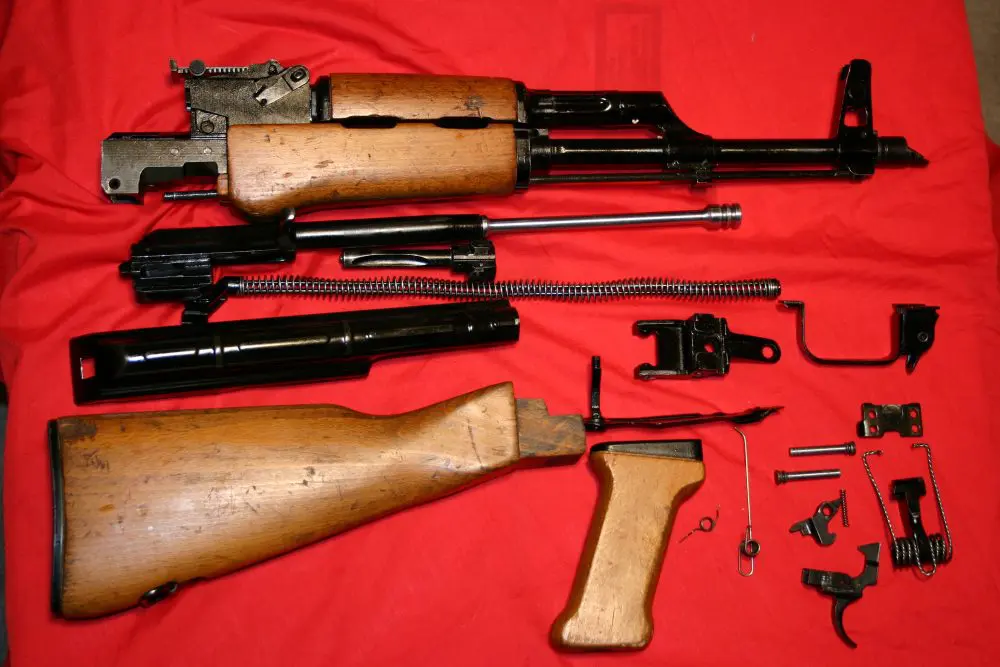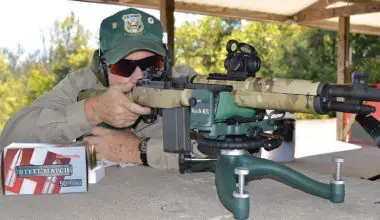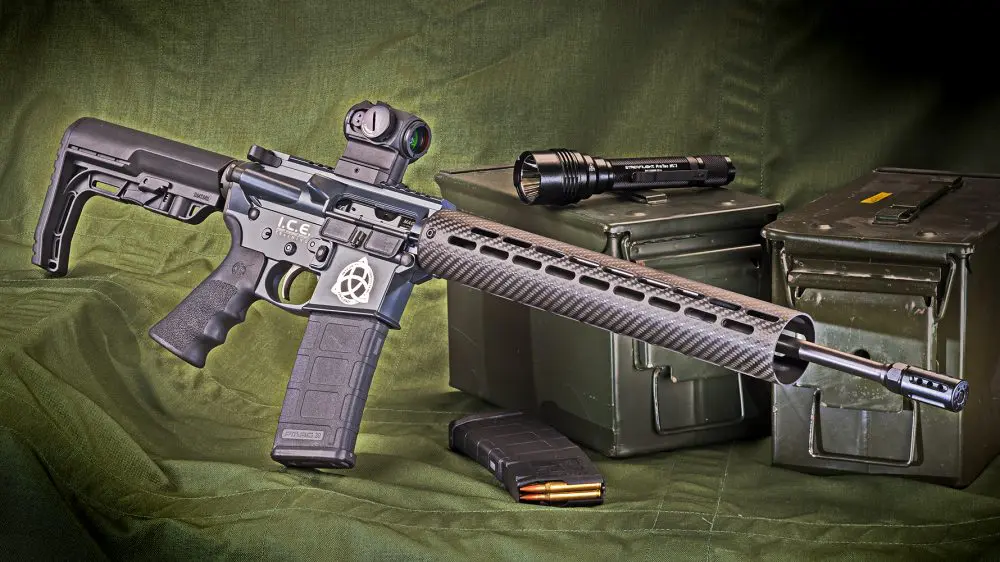

The problem with the bleating is that the simple times they wish for are long gone, and what they are really championing is something less capable.
Lighter weight is not always necessarily better, and more weight is not necessarily evil. Instead, we need to understand what the mission requirements are, then get the very best equipment we can to accomplish that mission.
The Law of Diminishing Returns applies to everything, but especially to handheld weapons. We can make carbines and rifles very light, but only at the cost of making them less efficient.
One example of this is eliminating the optical sight—a fatal flaw, as the red dot sight (RDS) is significantly simpler than iron sights, and can be considered a force multiplier. Removing an optic is false economy.
The weight of the piece can be debated unto death, and has been a constant among infantrymen long before there were firearms.
The weight of the carbine is related to the efficiency of that carbine and is subject to the Law of Inverse Proportions. With all things being equal, a heavier weapon will have less recoil and muzzle flip. However, it will be more difficult to carry and deploy over the long term.
A lighter weight carbine is easier to wield but will also have more recoil and muzzle flip, making successive shots more difficult. It will also heat up faster. This can make extended strings of fire uncomfortable.
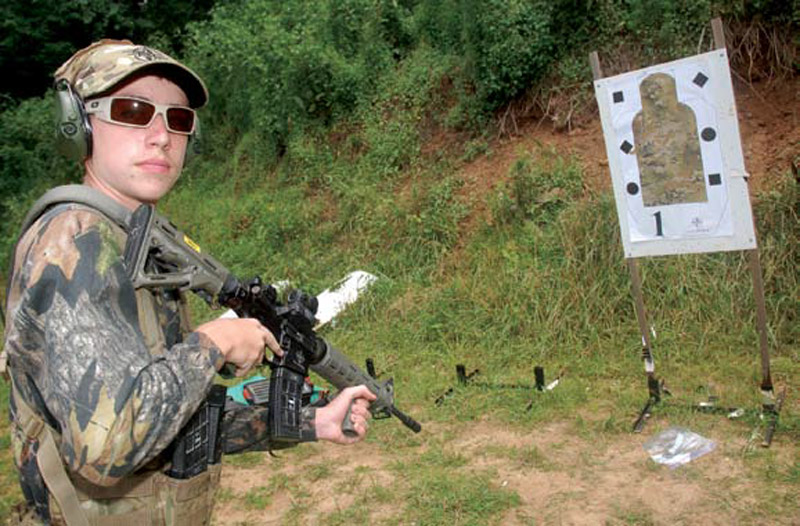

Table of Contents
THE LIGHTER WEIGHT IDEA
Awhile back I started to look at doing a lighter weight carbine that was still functional as a fighting gun. The desired purposes were to have a carbine that would be useful for those whose size and/or upper-body strength make a lighter weight carbine necessary, but also make it useable—shootable—for long periods, such as at class.
The purpose wasn’t to make a lightweight carbine. They already exist, and in many versions, from the M16A1 Carbines (14.5-inch standard barrel, fixed carry handle) to some more esoteric guns. If you want a high-quality, no-two-ways-aboutit actual lightweight carbine, look no further than LaRue Tactical, where you can purchase the 5.56mm Predator at just over six pounds. It’s an excellent gun made by an excellent company.
My colleagues at EAG Tactical and I were looking at something different: we wanted a mid-length carbine that was lighter and shorter than a standard weight 16-inch gun. The mid-length gas system appears to offer various benefits over the long term. We also wanted to utilize the BattleComp Compensator. We have had good experience with this on our EAG Tactical guns, and considered that this might somewhat mitigate the recoil/muzzle jump of a lighter gun.
I brought this up with Paul Buffoni, the energetic owner of Bravo Company USA, and after a few telcons we figured out what we wanted.
EAG CARBINE
Paul and I had collaborated on the EAG Carbine last year, and our mission requirement was to provide the user with an out-of-the-box ready-to-use carbine suitable for hard use. We deliberately did not include an optical sight because the user requirements would vary. We felt it was best left to the buyer to make that decision.
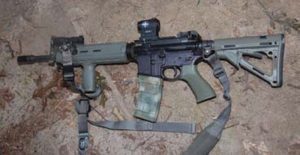
The EAG Carbine is a 14.5-inch Carbine with a mid-length gas system. The barrel is cold hammer forged to reflect the anticipated hard use, and had either a standard A2X flash hider or the excellent Battle Comp 1.5 Compensator permanently attached. A nine-inch LaRue rail, Magpul MOE stock, TangoDown PR-4 rear sling attachment, pistol grip and vertical foregrip, Troy Industries BUIS, and Viking Tactics sling were all chosen due to their quality and my own extensive personal use of them.
We already had multiple 16-inch BCM Carbines in the armory, including Filthy 14 (which is now at 45,345 rounds downrange), so we were sure the system worked. To validate it, Paul built a 14.5-inch prototype mid-length, using all the parts that would be used on the EAG Carbine. We put over 6,000 rounds downrange with this prototype and were pleasantly surprised at how well the gun handled.
I had a particular carbine in mind— something lighter in weight and easier to handle for women and small-statured (not to say weak) men. I also wanted the carbine to be a capable defensive weapon and useful during high-round-count classes.
HOTEL SIERRA
The final result was Hotel Sierra (HS), a 14.5-inch lightweight chrome-lined mid-length barrel with permanently attached Battle Comp 1.5-inch Compensator. And while we have a strong affinity for the nine-inch LaRue rail we normally run on our EAG carbines, we only mounted a white light and VFG on the front of this gun, not an IR/Visible Laser Sight.
Based on that criteria, we chose the Magpul MOE Handguard as an inexpensive and functional unit that is also easy to install.
ILLUMINATION OPTIONS
Since the purpose of this particular carbine was as a defensive weapon, a white light is mandated. There is an almost bewildering choice of lights available, but quality choices are sometimes narrow.
We looked at three SureFire lights:
The Mini Scout Light (M300A) is a more compact version of the very capable Scout Light and was in line with our lighter weight goal. It costs $345, is 4 inches long, and weighs 4.5 ounces. It produces 110 lumens for 1.3 hours of run time. I consider 110 lumens the minimum necessary. It is sufficient for the home-defense role that was the purpose of this gun.
The full-size M600C is approximately 1” longer and .75 ounce heavier, with a 200-lumen output for a two-hour runtime. The Charlie costs $425.
The G2X is 5.20 inches long and weighs 4.4 ounces. It produces 200 lumens for two hours of run time. It costs $95.
The G2X is not recommended by the manufacturer for use as a weapon light, and the body is slightly smaller than the G2 it replaced, making fit in some light mounts problematic.
The LaRue Tactical LT606 will handle it with ease and is the first choice. However, you can shim the body of the light with tape or aluminum foil and place the light in the Viking Tactics light mount.
I take what SureFire says seriously, but have been running seven G2X lights on EAG guns for the past year. We have over 7,000 rounds downrange on one, and somewhat less on the other six. To date, we have seen zero issues. Your mileage may vary.
We eventually chose the Mini Scout, but as always are evaluating our options and may change out to a brighter light at a later date.
To mount the M300A, we used the Magpul MOE Illumination Kit, and mounted the light in a Badger Ordnance M7 Flashlight mount. This is designed for the SureFire Scout Light, arguably the best of the weapon-mounted white lights. It is also dual hatted, as it has a socket for a QD sling swivel.
OTHER ACCESSORIES
HS has the ubiquitous Aimpoint T1 in a LaRue LT660 mount. This is my “go to” RDS, combining excellent reliability with extensive battery life (50,000 hrs) and light weight. The LT660 mount is all that and more, and I have never seen one fail.
We originally added a Troy Industries BUIS. This is a seldom-used item (I last popped a BUIS up for other than zeroing purposes circa 1998) and may replace it with a Magpul MBUS down the road.
We kept the standard A Frame front sight on this gun, though it adds weight. However, I appreciate the fact that the front sight is always there and, in the event of an RDS failure, I can use the body of the RDS as a large rear-sight aperture and continue to engage.

Sometimes in class, lightweight rails get hot during prolonged strings of fire. I have been using a vertical foregrip for a long time, as it fits my shooting style and white light doctrine. It also reduces the felt heat on my support-side paw. While I normally run the excellent TangoDown VFG, we added the Magpul MOE Rail Vertical Grip (RVG) on this gun because it is purpose-made for the MOE handguard.
With Aimpoint T1 and SureFire Mini Scout Light, the HS weighs in at seven pounds, ten ounces.
For comparison, the standard EAG/ BCM Carbine with Aimpoint T1 and SureFire G2 light is eight pounds, five ounces. The same EAG/BCM Carbine with the addition of a DBAL-A2 weighs eight pounds, 15 ounces.
SHOOTING RESULTS
At the time of this writing, we have a tad over 6,000 rounds through this gun with no problems. Contrary to errornet myths, the AR—or at least those built to the standard—do not require a break-in period, and this gun (like all other Bravo Company guns) ran from the start.
It has not been cleaned, as obsessivecompulsive cleaning is not necessary. It has been generously lubed with what we always use, SLiP 2000 EWL.
While this carbine was not intended only for females, several did run this gun in class, as did some males, including cops, civilians and my 14-year-old neighbor Mike. The comments from all the shooters were positive, citing balance, ease of handling and control.
The results were surprising. We anticipated that some users wanted a lighter weight carbine, but not the numbers that we eventually saw.

Paul Buffoni and I discussed this at a class at the Dane County Law Enforcement Training Center, Waunakee, Wisconsin. Bravo Company had just moved into a new 32,000 square-foot facility, and he felt this might be a viable product.
SECOND EAG CARBINE
Bravo Company will be making this as a second EAG Carbine (supplementing the original EAG/BCM Carbine). To keep the cost lower as well as allow the user some wiggle room for options, this gun will be sold without a white light or optic. Personal preference and mission requirements will determine what one will use or not use, and it is likely some may choose not to use a weapon-mounted white light with this gun.
It will come with a Blue Force Gear Victory Sling, a simple but functional twopoint tactical sling. It will also sell at a terrific price.
The conventional A2 grip will be replaced with the new Bravo Company pistol grip (which is a very comfortable item), and the Troy Industries BUIS will be replaced with the Magpul MBUS.
The Troy is the gold standard in folding BUIS, but as they are seldom used, we opted for the less expensive and very capable MBUS, which is also a tad lighter.
As not everyone uses a rear receiver sling attachment point, we reluctantly deleted the excellent TD PR-4 and likewise replaced the MOE stock with the Magpul CTR stock, which has an integral QD socket.
This is not a general-purpose carbine. But it’s one that can be made fully capable by adding RDS and white light, while not being too heavy for some segments of the user community.
The lighter weight may be useful to some, but others may need a more capable— and thus heavier—carbine.
